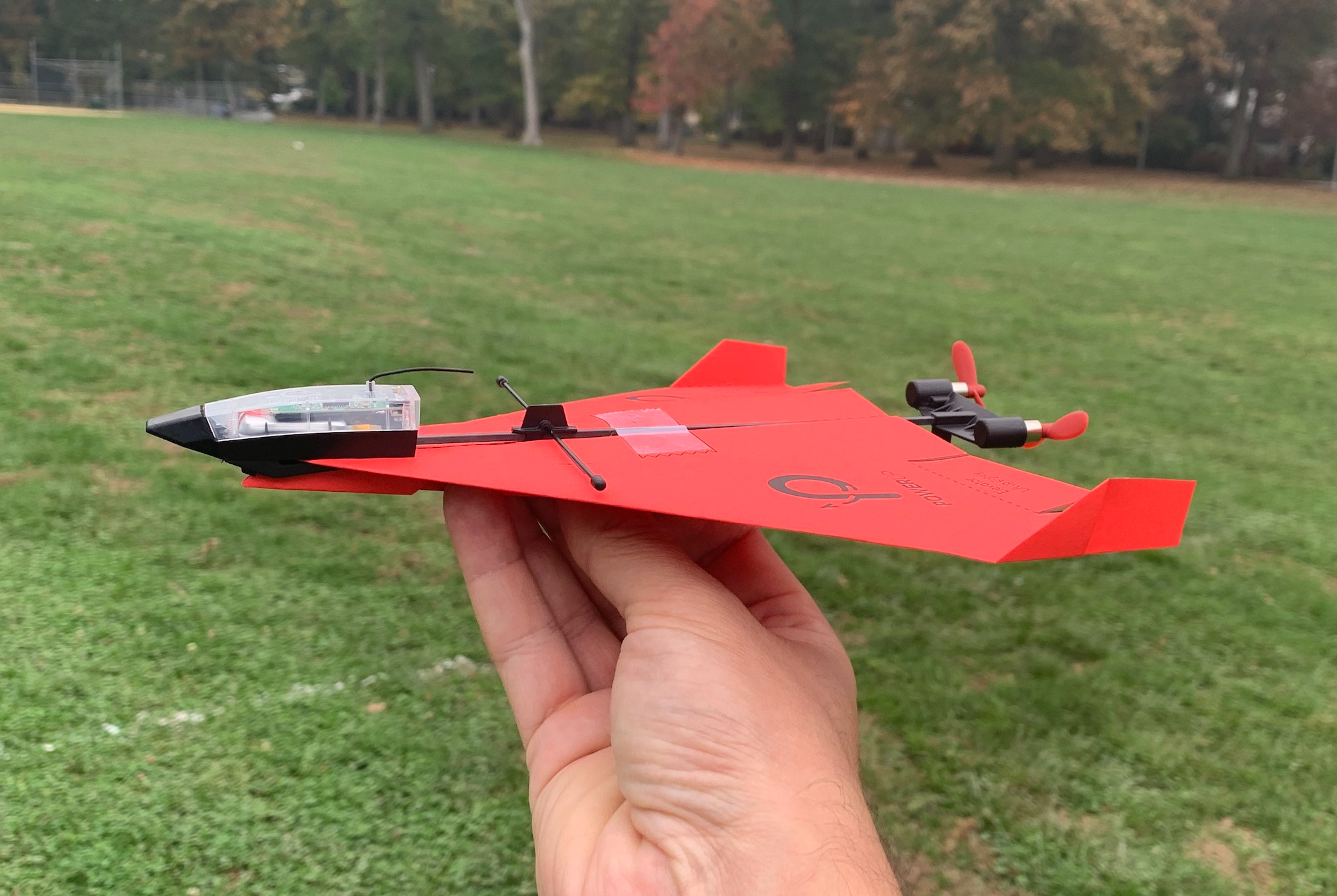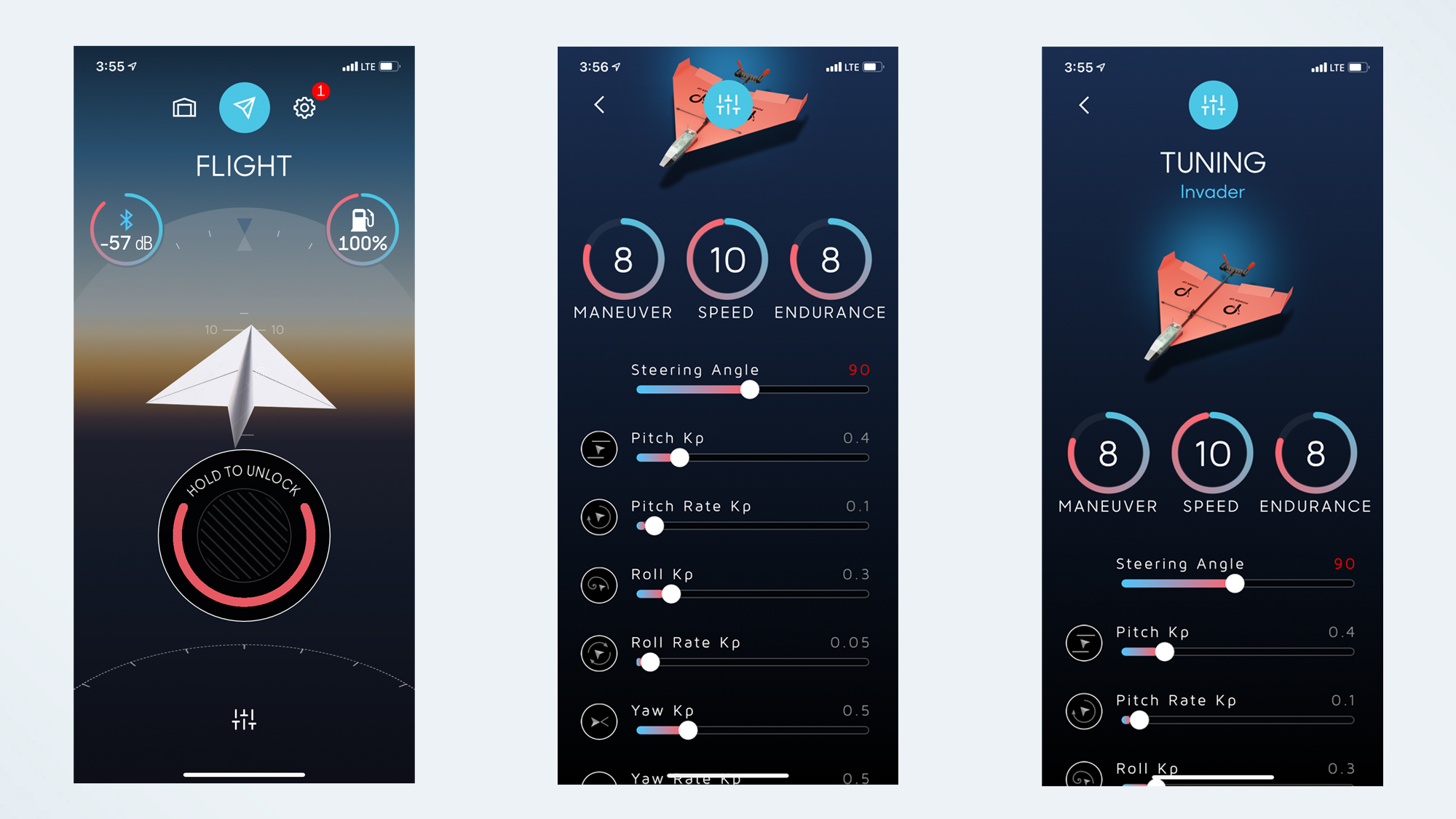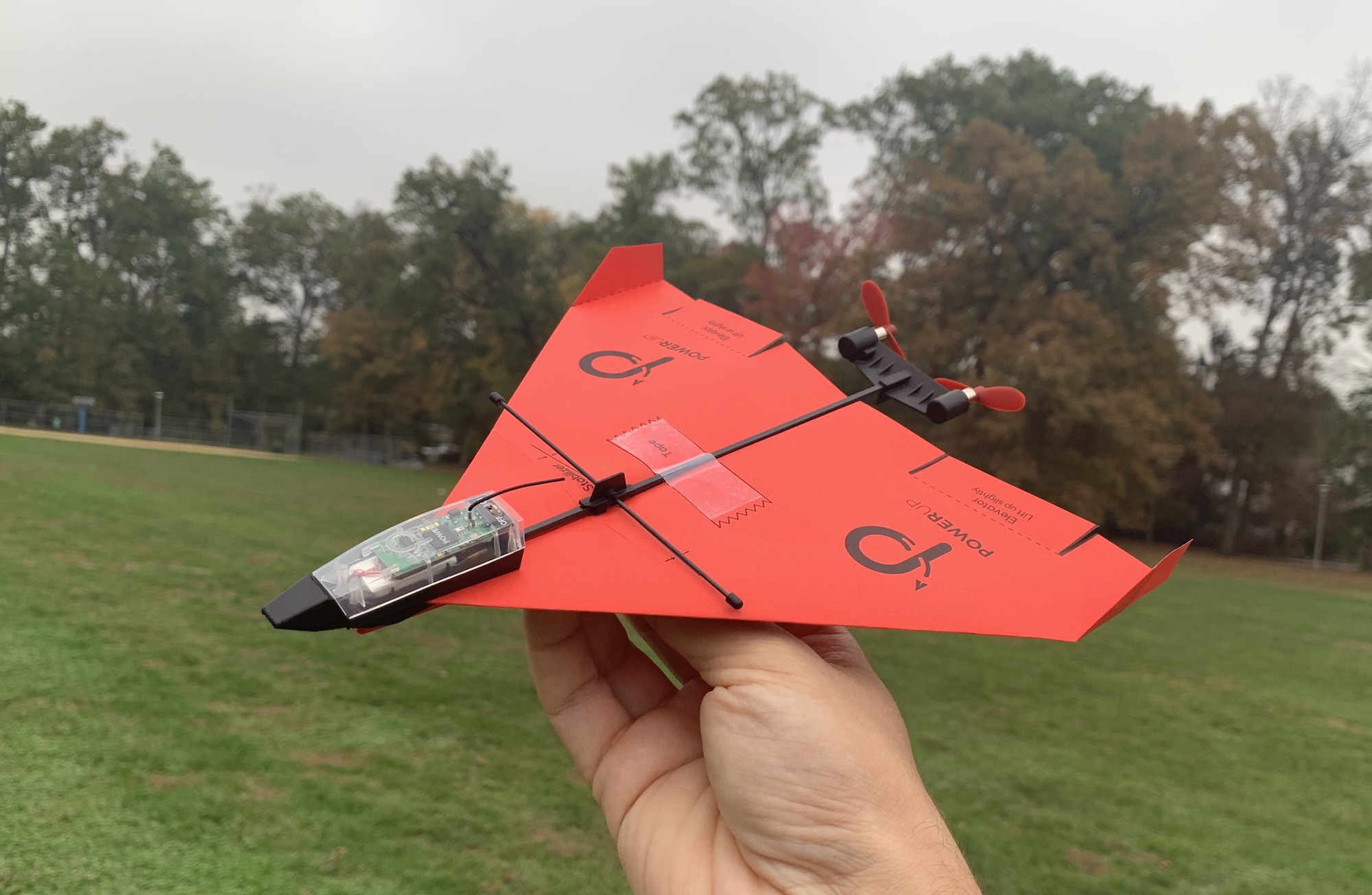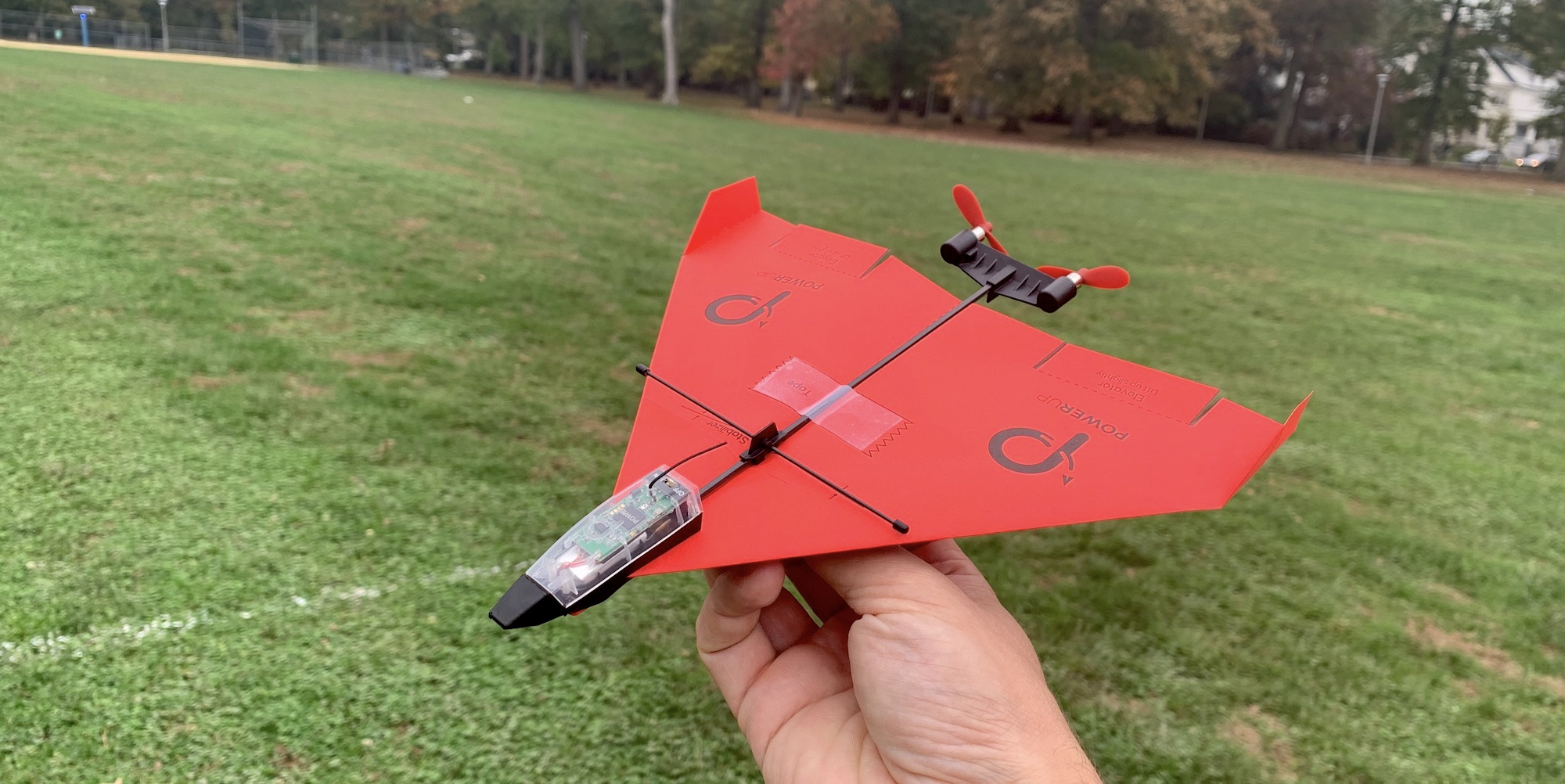Tom's Guide Verdict
The PowerUp 4.0 is a fun way to take paper airplanes to the next level
Pros
- +
Customizable
- +
Flies well
- +
Inexpensive
Cons
- -
Learning curve
- -
Requires a lot of space to fly
Why you can trust Tom's Guide
The PowerUp 4.0 takes the humble paper airplane and propels it, literally, into the modern era. This little gadget, which has a pair of propellers, clips onto a paper airplane and lets you fly it using your smartphone.
As I discovered when testing it for this PowerUp 4.0 review, there’s a bit of a learning curve, but once you get the hang of it, the PowerUp 4.0 is a ton of fun. It’s also one of the best cheap drones around. Just make sure you fly it in a very large field.
Weight: 19 grams
Flight time: 10 minutes
Wireless: Bluetooth
Range: 230 feet
PowerUp 4.0 review: Price and availability
The PowerUp 4.0 has been available since October 2020. It costs $79.99 and is for sale on PowerUp’s site as well as Amazon.
PowerUp sells the PowerUp 4.0 in several bundles: The Pro bundle ($129) includes balsa wood kits, a foam F22 jet, and a landing gear. The PowerUp 4.0 Flight Manual bundle ($99) comes with 10 airplane templates, two waterproof airplane templates, and a desk stand. A Nightflight bundle ($99) includes LED lights that run along the airplane’s wings.

PowerUp 4.0 review: Design
Like previous PowerUp models, the PowerUp 4.0 consists of a control unit housing the battery and processor connected by a long thin carbon fiber tube to a pair of propellers. The control unit has a small on/off switch and a microUSB port for recharging its battery.
The kit comes with four sheets of paper with folding instructions, but you can use any old piece of paper to create the airplane. I recommend something a little heavier than your standard printer paper, though. You can also use the PowerUp with light balsa models as well as styrofoam airplanes, so long as they weigh less than 20 grams.
PowerUp has instructional videos on how to fold the airplanes, and you can download templates from its website.
Get instant access to breaking news, the hottest reviews, great deals and helpful tips.
Folding the airplanes takes as long as it would typically take you to fold a paper airplane. You’ll also need some scotch tape, which is not included. However, the kit does include a mini USB charging cable and a spare set of propellers.

PowerUp 4.0 review: App
For such a simple toy, the PowerUp app (Android, iOS) has a surprisingly deep well of features.
The main screen of the app has a large throttle button that lets you control the power going to the propellers. In the background is a horizon level, which lets you see at a glance which way the PowerUp is pointing.
Above the throttle are two gauges, one showing the battery life and another showing the strength of the Bluetooth connection to the plane.
At the bottom of the screen is a small icon for settings, which lets you adjust a dizzying array of things such as pitch, roll, and yaw. You can also get instructions for making 14 different airplanes; the app shows the maneuverability, speed, and endurance of each.

PowerUp 4.0 review: Flight performance
While flying a regular paper airplane is as simple as just tossing it into the air, the PowerUp 4.0 takes a bit more practice. That’s because its propellers are quite powerful and will cause the plane to shoot off in any direction. More than a few times I tossed the plane into the air only to have it nosedive right into the ground.
It helps to learn how to throw the PowerUp 4.0 with your non-dominant hand. That way, it’s a lot easier to control the aircraft from your smartphone with your dominant hand. Otherwise, you’re prone to flying the PowerUp out of control.
After a few hard crashes, the PowerUp itself was undamaged, but the paper section was torn, making the plane unflyable. Five minutes and another folded paper airplane later, and I was ready to get back in the air.
Make sure you find a large field — football or soccer-sized, preferably — to use this plane, because it wants to fly. While PowerUp advertises a range of up to 230 feet, when connected to my iPhone XR, I found it had a range of about 120 feet. And, once aloft, it’ll keep going. After one flight, I spent an anxious 15 minutes searching for the plane after it flew out of sight.
PowerUp advertises that the battery in the plane will give you about 10 minutes of flight time. That doesn’t seem like much, but given that most flights will last a minute at best, it should be more than enough to keep you satisfied. The battery will fully recharge in about 30 minutes.

PowerUp 4.0 review: Verdict
Having used — and been somewhat frustrated by — earlier PowerUp airplanes, I had a tremendous time with this new version for my PowerUp 4.0 review. It’s not as easy to control as a quadcopter, but it’s immensely fun to see it slip the surly bonds. The fact that you can customize the PowerUp 4.0 with paper, balsa, or foam airplanes of your own design makes this a drone that’s not only fun, but one that challenges your imagination and creativity.

Michael A. Prospero is the U.S. Editor-in-Chief for Tom’s Guide. He oversees all evergreen content and oversees the Homes, Smart Home, and Fitness/Wearables categories for the site. In his spare time, he also tests out the latest drones, electric scooters, and smart home gadgets, such as video doorbells. Before his tenure at Tom's Guide, he was the Reviews Editor for Laptop Magazine, a reporter at Fast Company, the Times of Trenton, and, many eons back, an intern at George magazine. He received his undergraduate degree from Boston College, where he worked on the campus newspaper The Heights, and then attended the Columbia University school of Journalism. When he’s not testing out the latest running watch, electric scooter, or skiing or training for a marathon, he’s probably using the latest sous vide machine, smoker, or pizza oven, to the delight — or chagrin — of his family.


